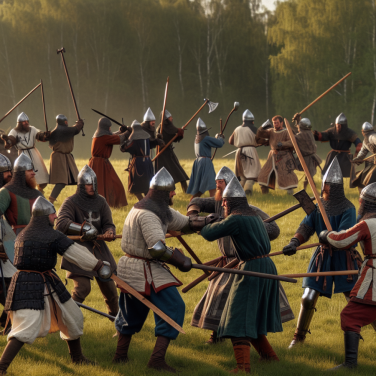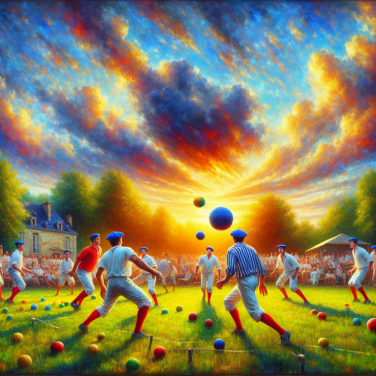Revisiting the Evolution of Modern Soccer in its Original Homeland
England is widely considered the birthplace of modern soccer, or football, as it is known across the globe. However, the roots of this globally beloved sport are entwined deeply with the history and culture of many ancient civilizations. Some historians trace its origins back to the second and third centuries B.C., where the Chinese game of 'Tsu Chu,' resembling soccer, was played with a ball filled with feathers and hair.
Egyptians, Greeks, and Romans also had ball games that shared similarities with soccer, but it was in Medieval England where the structured rules that gave shape to the game we love today first started forming. The sport was initially a chaotic and often violent event, with entire towns participating in matches that lasted for days.
One of the earliest records of soccer was in the 12th century when Shrovetide football started to become popular. These games often turned entire towns into a field, with goals set up miles apart. The objective was simple - to get the ball to the team's goal. Violent chaos usually ensued, as hundreds, sometimes thousands of people, would join the melee to push the ball to the right destination. This version of the game was so rough that by the 13th century, soccer had been banned by King Edward II.
Despite the ban, the game continued to be played stealthily. An ever-evolving amalgamation of rules and regulations started to take shape by the 16th century, slowly maturing towards the game we know today. However, it wasn't until the 19th century that the game became structurally organized.
With the onset of the industrial revolution, working classes in England started to have more leisure time. Football clubs began springing up in schools and factories, with each club having its own rules and regulations. This led to confusion and conflicts during matches, prompting the need for codified rules.
In 1863, the English Football Association was established to devise a standardized set of rules. This was a seminal moment in soccer’s evolution, marking the division between rugby and soccer - or, as the British like to call it, football. The decision to ban the use of hands in the game was a significant juncture that separates soccer from its ancient relatives, transforming it into the modern sport we relish today.
The professionalization of soccer first started happening in the late 1880s. Small clubs began to pay their talented players to prevent them from joining rival clubs.
Read also:
Securing Borders: Inside the Life of Military Patrol Units
Tracing the Roots of Soccer in Ancient Times
Dating back more than 2,000 years ago, human civilizations across the world have participated in various forms of foot-based games. The ancient Egyptians, Chinese, Greeks, and Romans all had their versions of these games, many of which had elements similar to modern soccer. Yet it's challenging to pinpoint a single event or culture as "the birthplace of soccer."
The earliest reference to a recognizable form of soccer dates back to around 2500 B.C., in ancient Egypt. As part of their fertility rites and religious festivals, such as the festival of Baqet, Egyptians played a game that was somewhat similar to soccer. The game involved two teams, with an equal number of players who tried to hit a ball with their bodies (excluding their hands) to score goals. The ball was made of animal hides or linen, filled with chaff or grains.
Additionally, a competitive game that may have influenced the development of soccer was Cuju (literally "kick ball"), which was played in ancient China during the Western Han Dynasty around 206B.C.-220A.D. The aim of Cuju was to kick a leather ball through a hole in a cloth hung between two poles. With its existence of strict rules, use of specific skills and true competitive nature, many historians believe Cuju to be an early form of soccer.
Moving toward ancient Greece, they introduced a game called Episkyros, often part of their military training. In this game, players could use any body part except their hands to move a ball across the opponent's boundary line. As well, they incorporated a sphere made out of leather and filled with air, much like the soccer ball we know today.
In ancient Rome, a game called Harpastum was popular. While initially an adaptation of the Greek game of Episkyros, Harpastum took on its unique machinery with a smaller, harder ball and two teams each aiming to keep the ball on their side for as long as possible. Like modern soccer, the concept of teamwork was prominent in Harpastum.
While the debate on the true origin of soccer can seem convoluted, what remains clear is that its roots are well embedded in ancient civilization. These early foot-based games instilled the rudimentary aspects of what would eventually evolve into the modern game of soccer.




